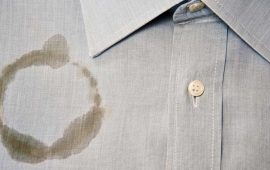Chemicals for the textile industry
Principles of textile industry
The textile industry dates back to 5,500 years ago, when the Egyptians made their clothing from cotton and then the Chinese from silkworm breeding.
In all eras to date, textile consists of two principles of spinning, which is the production of yarn and weaving, which is the production of fabrics and clothing. Today, in order to better perform these two principles, chemicals are used to improve the quality of the final product.
Production stages in the textile industry
The initial stages of yarn production in the textile industry include the following:
- Fiber production
- Convert fibers to yarn
- Turn yarn into fabric and textiles
- Complementary fabric processes such as dyeing and printing
Complementary process of textile industries
The complementary process is performed in the presence of humidity, temperature and pressure by both mechanical and chemical methods. In the mechanical method, operations such as fabric lathe, pressing, scratching, ironing are performed, but in the chemical method, chemical operations are performed such as increasing the resistance of the fabric against burning and heat, bleaching and resin.
Chemicals used in the textile industry
Many chemicals are used in textile industries such as acetic acid, formic acid, anionic soap, nanoic flake softener (crack NNP-3000), sodium alginate, light carbonate, polyvinyl alcohol, hydrogen peroxide, sodium bicarbonate, etc., according to The importance of consuming these materials and its effect on the final product, some of the chemicals used in the textile industry are briefly described below:
Perk profit
This chemical is used in the textile industry as a degreaser and can remove fat before any process on the fibers.
Perk benefit increases the strength of knitting and has stabilizing properties.
Carrier
Carrier is available in both liquid and powder form. This chemical is used in the textile industry in cases such as dyeing polyester goods with dispersion dyes and for color uniformity in fabrics that are not uniformly dyed.
Cationic flake softener (Iranian FCS-500)
It is a cationic emollient and is compatible with resin electrolytes. The appearance of this softener is flaky and if it is combined with hot water in appropriate proportions, not only does it not cause the fabric to turn yellow, but it also causes its strength, softness and softness by uniform absorption in the fabric.v
Cationic flake softener (crack NCP-2000)
This product has an effect on natural and synthetic fibers and does not cause yellowing. It is also compatible with filling agents such as resins and anionic substances, and the cationic effect can be increased by adding acetic acid to it.
This chemical is 100% flaky and has high solubility. The remarkable thing about this product is that in the last stage of dissolution, this product must be transformed into a cream-like liquid, viscous.







